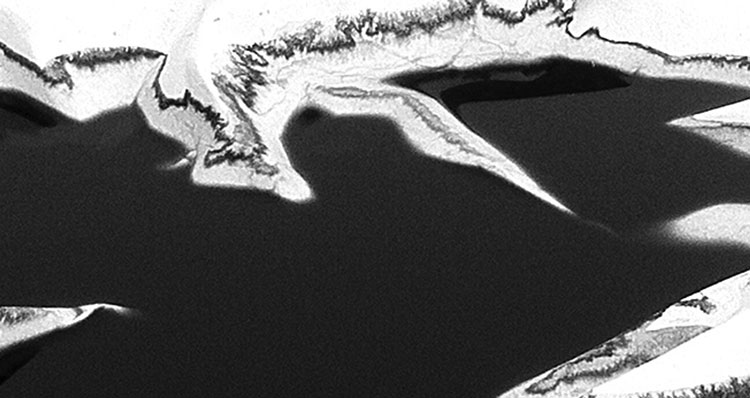During a studio visit, Jim Skuldt points out that milk crates around the world don’t come in a single standard size and shape, as one might have thought. He points to a few of his that are filled and stacked beneath a large desk and loaded onto roadie carts that came from the purchase of Neil Diamond’s well-worn touring stage, which he has repurposed in the service of art. Such mundane things hold high status in Skuldt’s work. Why? As he eloquently explains, objects like milk crates are components of modular systems, which in turn function as key players in networks that increasingly grow more complex and integral to a globalized, 21st-century culture.
If you can imagine combining the diverse sensibilities of artists like Andrea Zittel, Martin Kersels, Mike Kelley and Bas Jan Ader, you might have a hint of Skuldt’s art. But nothing prepares like checking out his website (www.skuldt.com), where physical and mediated reality are intertwined. Creating and appropriating modular elements, spatial diagraming, mapping and graphing are all activities central to Skuldt’s art-making. He combines an engineer’s or city planner’s approach with the imagination of an adolescent to solve problem conditions in his own personal space or, alternatively, on the scale of the world. But whether the artist builds sculptures or performs for an audience in a gallery or through an online video, there’s an element of myth-making that makes the viewer unsure of what has in fact happened or is perhaps imagined.
In fact, Skuldt’s website may be a better indication of the artist’s psychology than seeing his studio or even his most recent exhibition. Past and current projects come across as a reflection of a seemingly schizophrenic and deeply subversive sensibility, with incredibly funny deadpan descriptions of project goals, obsessive plans and diagrams, internet-appropriated photographs for analogy, and reportorial-style videos with deliberately garbled voice-overs. The modular mapping of space is a constant thread in activities as diverse as documenting his neighbors’ littering habits via daily blog posts to a high-concept plan to outsmart and trap stray alley cats in need of neutering.
In a recent exhibition at the Armory Center in Pasadena, “Island Effects,” how land evolves over time is the ultimate subject of paintings, drawings, sculpture, and a video, with the tragi-comical implication that California will (again) be subsumed by ocean. Skuldt’s current and most ambitious project is his dream of traveling around the world literally as container cargo, within a customized apartment of his own design. The compartment would require refrigeration/heating, plumbing, and electricity, not to mention the logistics of arranging travel and—here’s the expensive part—the cranes to hoist his DIY hotel onto ships, planes, and other modes of transport.
Skuldt has been planning this shipping container project since 2007, and you can see representations of the idea in much of his art to date. Lately he has secured institutional support in order to make it happen within the next three years. As he documents his great journey, it will no doubt be impossible to separate out the factual accounts from myth. But then, who would want to?


